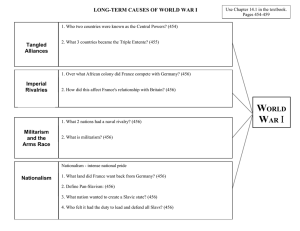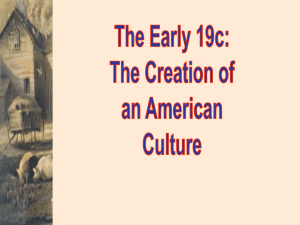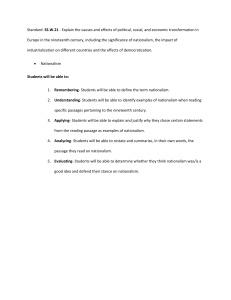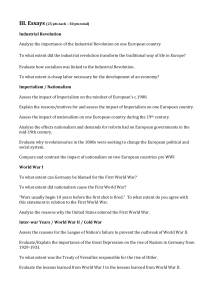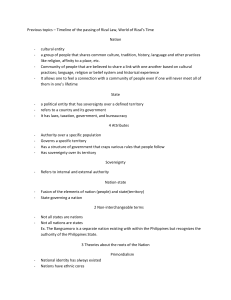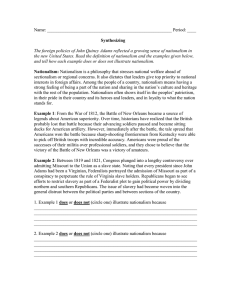Nationalism
advertisement
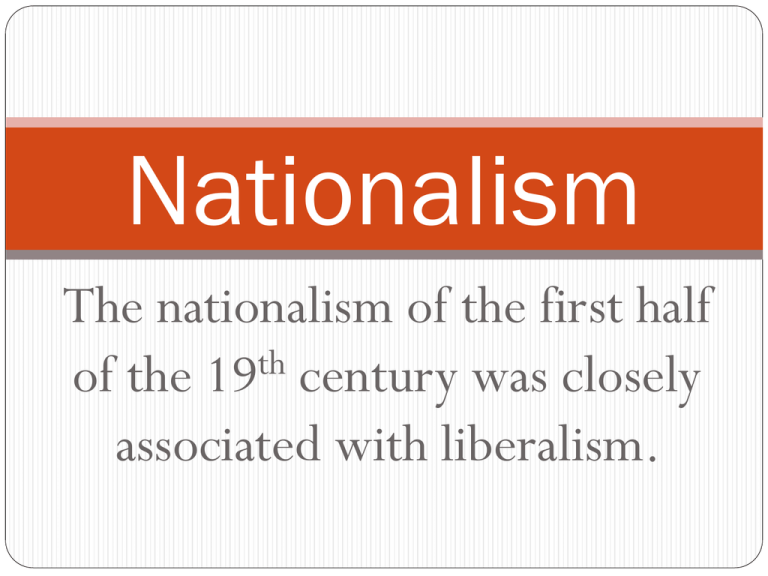
Nationalism The nationalism of the first half th of the 19 century was closely associated with liberalism. Cultural Nationalism Asserted that each ethnicity or nation, meaning people, has a distinct identity based on common language, food, dance, traditions, and often but not always religion. For most nationalities, such cultural unity was more of a dream than reality. Local dialects abounded, and peasants from nearby villages often failed to understand each other. Historical memory often divided the inhabitants of the different German or Italian states as much as it unified them. Also, a variety of ethnic groups shared the territory of most states. Political Nationalism In already formed states, nationalism meant patriotism, love of and commitment to country, and the drive to enhance the country’s prestige and power. The more explosive form of nationalism developed where nationstates had not yet been formed. Nationalists demanded the right to form liberal states whose boundaries were determined by the nation. This meant unification in the case of Italy and Germany, and independence for the subject nationalities under Austrian, Russian, or Ottoman rule.
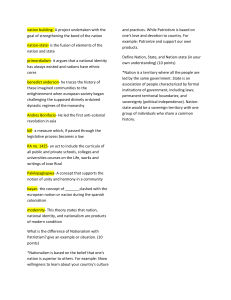
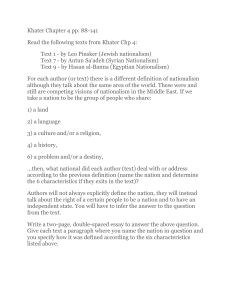
![“The Progress of invention is really a threat [to monarchy]. Whenever](http://s2.studylib.net/store/data/005328855_1-dcf2226918c1b7efad661cb19485529d-300x300.png)

